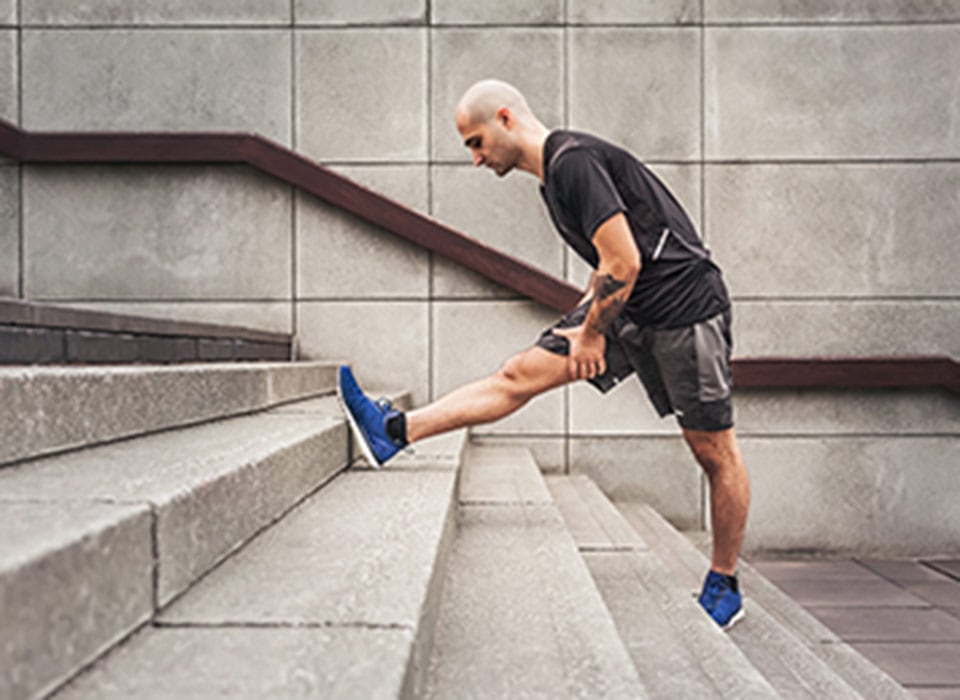The hamstrings and hamstring muscles are the tendons and group of muscles located in the back of our thigh. They allow for the bending of our knees and straightening of our hips and are especially vital tendons and muscle groups for athletes of every skill level.
Hamstring injuries can be a nightmare that plagues the career of the athlete. Pulling “a hammy” is a potential injury for everyone, but those who play soccer, basketball, football, tennis, or any sport that involves quick changes in pace and direction are more susceptible.
Thankfully, self-care measures and at home remedies are usually perfectly sufficient to relieve pain and swelling, and surgery is rarely needed.
What are the symptoms of a hamstring injury?
- Sudden onset of sharp pain in back of thigh.
- Swelling and tenderness at injury site.
- Popping or tearing sensation in back of thigh.
- Muscle weakness and inability to bear weight on injured leg.
What are the causes of a hamstring injury?
As stated above, the hamstring tendons and muscles allow our bodies to bend our knees and extend our hips. When these tendons and muscles are stretched beyond their limits, a hamstring injury can occur.
Typically, a hamstring injury is caused by rapid acceleration or initiating running too abruptly. You are at a higher risk if you
- Play sports that involve quick changes of pace.
- Have a prior hamstring injury.
- Have poor flexibility in your lower extremities.
How do you diagnose a hamstring injury?
Your physician will perform a physical exam, checking for any swelling or points of tenderness on the back of your thigh. The location and severity of your pain will help your physician determine the extent of the injury. Imaging tests can also be performed to help visualize the strain or tear.
- MRI
- Ultrasound
“In severe cases of hamstring injuries, an avulsion fracture can occur,” explains Meghan Richardson, MD, an orthopedic surgeon and sports medicine specialist. “One of the hamstring muscles can detach from the pelvis, and the muscle will tear away a small piece of the bone as it detaches.” If your physician suspects your hamstring injury includes an avulsion fracture, X-ray imaging will also be used for diagnosis.
Hamstring injuries can range in their severity from minor to major and are classified as one of the following.
- Grade I: minor strain.
- Grade II: partial rupture or tear.
- Grade III: complete rupture or tear.
What are the treatment options for a hamstring injury?
The goal of treatment for a hamstring injury is to restore full muscle function and to prevent the formation of scar tissue. Fortunately, most hamstring injuries heal without the need for major medical intervention.
If you are dealing with a hamstring injury, the following at home treatment measures will help promote the healing process.
- Take over-the-counter anti-inflammatory medication.
- Rest with leg elevated.
- Wrap the injured area.
- Apply ice to help reduce swelling.
- Take a break from physical activity.
- If needed, use a cane or crutches.
Once the pain has lessened, it is crucial to begin a physical therapy routine. Extended periods of leg immobilization can lead to muscle shrinkage and scar tissue. Physical therapists will help you perform specific exercises designed to improve your overall flexibility/range-of-motion and to strengthen your hamstring muscles.
Since this injury is significantly common in athletes, it is often very difficult to keep them off the field or court. Reinjury of the hamstring occurs frequently and is usually caused by a premature return to sport. While the competitive drive in an athlete is understandable, sometimes the athlete has to be saved from him or herself. Reinjury of the hamstring prolongs the healing process and increases the risk of permanent damage.
Surgery is rarely need, but if the muscle has pulled free from the pelvis, orthopedic surgery may be necessary for proper healing.
How can I prevent a hamstring injury?
Obviously, there is no full-proof method of preventing hamstring strains and tears, but regular stretching accompanied by a strength and conditioning regimen can significantly reduce your risk for hamstring injury.
Justin Dumont, DO, MS, a physical medicine and rehabilitation specialist, states “Many people play sports to stay in shape. However, one of the best ways to prevent a muscle injury such as the pulling of a hamstring is to regularly exercise outside of the sport you play. The better overall shape you are in, the less likely you are to hurt your hamstring.”
A well-balanced diet and proper hydration are also key to avoiding hamstring injury. Excessive weight puts a greater strain on your lower extremities, and dehydration can lead to muscle cramping, increasing your risk for injury.

